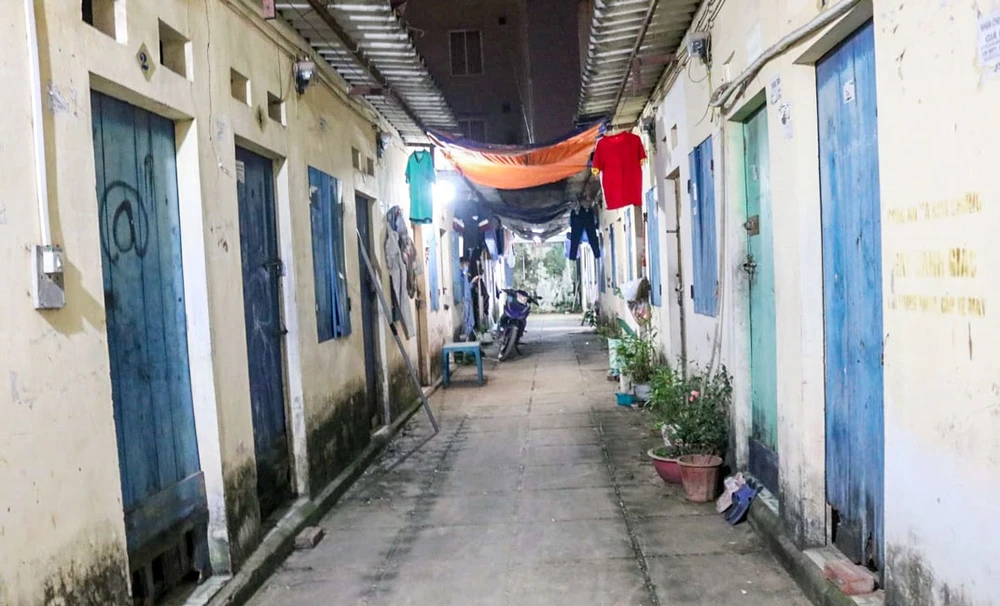
To tackle all such future threats, all big cities need to restructure on at least four major fronts, namely, population, organized space, traffic, and better low-cost housing.
China and Singapore experience
Cities in Southeast Asia which are currently at the epicenter of the Covid-19 pandemic all have populations of around at least ten million, such as Bangkok with eleven million, Ho Chi Minh City with 13 million, Manila with 11.5 million, and Jakarta with 12.5 million. The places where the pandemic started and quickly became hot spots are densely populated districts with very high population density, usually from 20,000 to 25,000 per square km, and in cities like Ho Chi Minh City this can go upto 65,000 people per every square km.
Therefore, urban planners and architects must consider designing small and medium cities. Megacities with millions of people may not be suitable anymore. The future functional megacities may be combinations of many small cities with about a few hundred thousand people, with each city being an independent unit, having between them a natural distance such as wide forest belts or rivers etc., so when necessary or required as now under the current pandemic, then each city can be isolated quickly.
The Covid-19 pandemic began in Wuhan City in Hubei Province of China and raged violently in that country of more than 1.4 billion people. However, China moved fast and was one of the countries that dealt most effectively with the pandemic situation. While in many countries the pandemic re-emerged on a large scale about three or four times, in China it emerged only two times. The first time was in Wuhan in December 2019, and it was not until 20 July 2021 that it reappeared for the second time in Nanjing City in Jiangsu Province. Within only 30 days, China controlled this second wave of pandemic and returned back to a new normal. The reason for this success was unified effort by institutions, strict discipline, and people having a high sense of compliance. There is also another important reason that organized living space of Chinese cities helped them to control the pandemic so quickly.
Cities in China before 1990 all had the same structure. Most of them were four-tiered buildings with corrugated iron roofs, crammed with oil-paper roofs, or rows of shophouse streets running as far as the eye could see, with narrow winding streets. During the process of conducting reform and opening up, China also began to restructure all its cities, remove old residential styles, and brought all residents to live in modern high-rise apartment buildings, surrounded by large green parks. It is this type of compressed residency that helped China control the pandemic very effectively.
The Singapore experience also shows this result. In April 2020, it seemed that the country had controlled the pandemic and was about to do away with isolation, but then suddenly the pandemic broke out again in dormitories where nearly 600,000 migrant workers from Asian countries lived. These dormitories lacked amenities, and thousands of people lived in tight spaces, with eight to twelve people living in one small room, making it a favorable environment for the virus to spread. More than 60% of the residents were infected at that time. More recently, the Singapore government decided to demolish the housing areas for foreign workers and rebuild new ones with only three to four workers sharing one self-contained apartment.
Planning Ho Chi Minh City
Large cities such as Bangkok, Manila, Phnom Penh, and Ho Chi Minh City are slow to turn around due to the erratic urban structure, which makes disease control very difficult. The fourth wave of the pandemic in Ho Chi Minh City showed that implementing blockades, isolation and social distancing is extremely difficult, sometimes even impossible. Streets are long, with close ground floor houses with common walls and no gaps or green spaces. Even if two blocks of houses are running parallel, the alley is too small, about only 1m wide, which is less than the minimum distance of 2m required for social distancing. In such conditions, isolation is completely impossible.
Therefore, in Ho Chi Minh City, Hanoi, Binh Duong and a few other such highly populated places, it is necessary to space out the population from dense areas, and this will help in controlling the spread of any highly infectious disease in future. For example, the Hanoi government had to move about 1,200 people living in Thanh Xuan Trung ward elsewhere for 14 days. Ho Chi Minh City also moved 2,000 people living in temporary and cramped housing in Binh Thanh district to another place. This was also done in District 4, District 5, Binh Tan and Tan Phu districts. Relocating population out of a crowded community was implemented in accordance with Directive 16, to neutralize the source of infection.
From the current experience, planners and architects in Southeast Asia, including Hanoi and Ho Chi Minh City, need to consider restructuring of living spaces similar to how China did. Accordingly, gradually demolishing low rise residential areas with high construction density and redeveloping crowded slums in a horizontal direction, changing to new residential compressed modern high-rise buildings, with large green spaces and distances between constructions, should be the best model to adopt for the future. It is this model that will reduce risks such as fires, explosions, and pandemics.
Urban restructuring, as mentioned above, is necessary, but it is not possible to do it immediately. However, it is necessary to include data and national criteria so that when there is a chance, we can carry it out. When building new urban areas, the experiences drawn from the Covid-19 pandemic must be considered as necessary suggestions for planners, architects and designers.




















